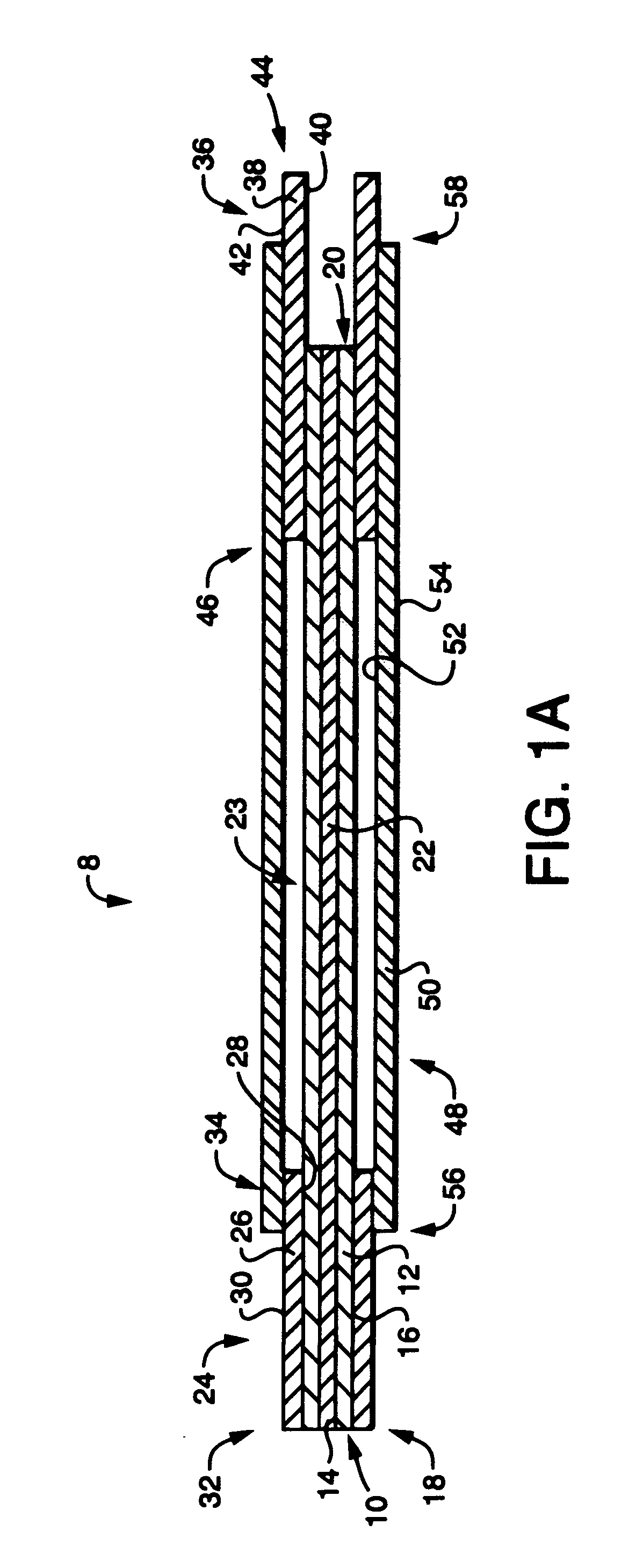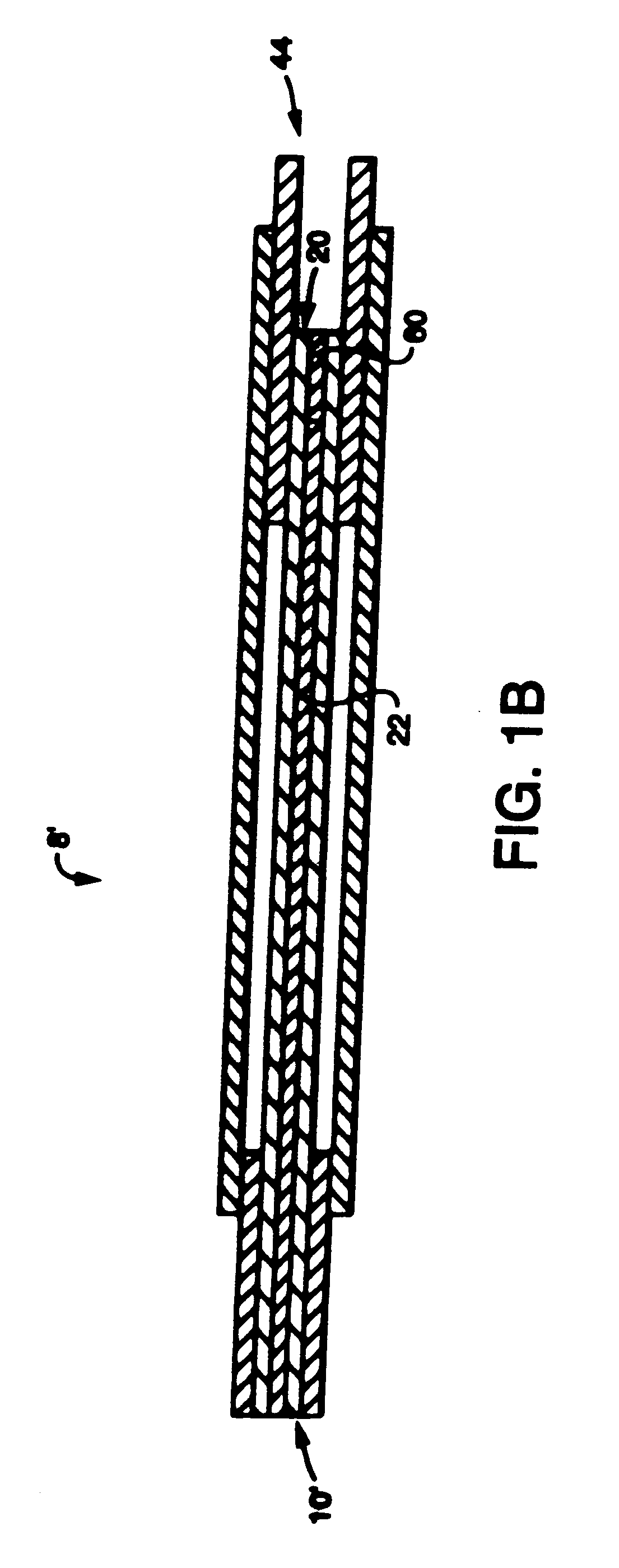Capillary tube liquid transport device
a liquid transport device and tube technology, applied in the field of capillary structure, can solve the problems of brittle and fragile nature of glass-like materials, difficult packing, shipping, handling, etc., and achieve the effects of stabilizing the liquid chromatography column, minimizing the dead volume of the column, and avoiding limiting its flexibility
- Summary
- Abstract
- Description
- Claims
- Application Information
AI Technical Summary
Benefits of technology
Problems solved by technology
Method used
Image
Examples
Embodiment Construction
[0033] The present invention will be described in detail as a device for transporting liquids, performing chromatography and linking other instruments including, by way of example, a mass spectrometer to a liquid chromatograph. However, it must be appreciated that these are preferred embodiments and the invention can be applied in other ways as will be appreciated by those who are skilled in the art.
[0034] A preferred embodiment of the invention is used to transport liquids through nano-scale capillary tubes. FIG. 1A illustrates a basic version of this device 8. The device is built around a first cylinder 10 having a wall 12. The wall 12 has an interior surface 14 and an exterior surface 16. This first cylinder has a first end 18, usually connected to an inlet mechanism, and a second end 20, usually connected to an outlet system. The interior volume of the first cylinder 10, surrounded by the interior surface 14, defines a chamber 22 for receiving a liquid sample.
[0035] A second c...
PUM
| Property | Measurement | Unit |
|---|---|---|
| diameter | aaaaa | aaaaa |
| diameter | aaaaa | aaaaa |
| diameter | aaaaa | aaaaa |
Abstract
Description
Claims
Application Information
 Login to View More
Login to View More - R&D
- Intellectual Property
- Life Sciences
- Materials
- Tech Scout
- Unparalleled Data Quality
- Higher Quality Content
- 60% Fewer Hallucinations
Browse by: Latest US Patents, China's latest patents, Technical Efficacy Thesaurus, Application Domain, Technology Topic, Popular Technical Reports.
© 2025 PatSnap. All rights reserved.Legal|Privacy policy|Modern Slavery Act Transparency Statement|Sitemap|About US| Contact US: help@patsnap.com



